A Guide To Chambray Shirts – Part One: Reproductions
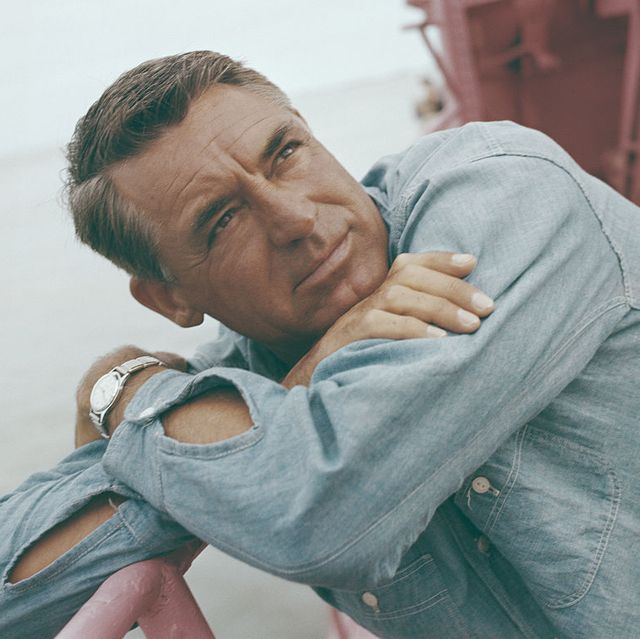
By Manish Puri
Imagine a Venn diagram with three rings representing quality cloth, construction and design.
If you buy an item of clothing that sits in one of those rings you’re still doing better than half the landfill-peddled-as-fashion you’ll find on the average UK high street.
If you buy something that lies in the union of two of them, you’ve made a savvy purchase. But, chances are that you’re informed enough to be aware of the missing dimension - and it’ll niggle at you. (“I love the cloth and design, but it’s starting to fall apart”, or, “My tailor made a flawless, entirely handmade suit, but I picked an impractical cloth.”)
It’s in the intersection of that trio - that small landing strip - where you’ll find permanent style (both lower-case and capitalised). And, in my eyes, the subject of today’s guide - the casual chambray shirt, which, in essence, means those inspired by American work shirts - is as perfect an embodiment of those three principles as any article of clothing I can think of.
Let’s start with the cloth. Chambray’s origins go back to the 1500s, in the Cambrai region of north-eastern France, where a lightweight plain-weave fabric was woven (initially in linen) to make shirts, handkerchiefs and delicate pieces like lace.
Eventually, that plain weave evolved into one with a coloured warp (usually blue) and a white weft - the defining feature of chambray (above).
Over the years, chambray became the de facto material for work shirts - it’s where the term “blue collar” originates from.
In 1935, Margaret Smith, a home economics specialist, summarised the fabric’s suitability for workwear in issue no. 1837 of US Farmers' Bulletin (above - an incredibly helpful and still remarkably current resource to help consumers determine quality):
“For outdoor work in mild weather, choose a material such as chambray, which is durable, firm enough to prevent sunburn, yet lightweight enough [to] admit air and be fairly cool.”
Cloth alone wasn’t enough to fortify the shirts against the rigours of manual labour, however. From mining to laying railroad to building skyscrapers, this was the uniform of the people that built a nation.
So these shirts, by modern standards, were extraordinarily well-constructed. Double and sometimes triple-stitched seams, bar tacks on stress points, and extra-strong buttons were typical features - and you’ll see many of them replicated on the shirts in this guide too.
And, finally, what of design? I mean, a suit of armour is durable and well-constructed too, but nobody wants to sit at a laptop wearing one.
The shirts were cut generously through the body so they wouldn't cling to sweat, full in the sleeve so there was no encumbrance to range of motion, long in the tails so they stayed tucked in, and with pockets that were ingeniously designed and truly functional (rather than the affected signifiers of casualness that are are often stitched onto a top these days).
In short, each new design or advancement was brought about to make the shirt more durable and less obtrusive. It was a workwear manifestation of that oft-quoted Hardy Amies aphorism, “a man should look as if he had bought his clothes with intelligence, put them on with care and then forgotten all about them.”
This guide is very deliberately focused on casual shirts and work shirts: those with chest pockets, contrast stitching, roomier cuts and softer, smaller point collars.
The collar is often a barometer of how successfully a shirt works with tailoring. The softer and smaller it is, the likelier the prospect of it slipping under the jacket and not framing your face in the same way as a dressier shirt (like the PS Selvedge Chambray). How much this matters will really depend on personal factors such as the length of your neck, or how you like to present yourself when wearing tailoring.
My fellow PS columnist André (below) excels at wearing soft-collar (and even collar-less) shirts with tailoring and jacket alternatives. Perhaps the key is undoing an extra shirt button just to reintroduce the length that's lost by not having a higher and larger collar. Whatever the secret, even if his collar slides under a lapel, it always seems a natural and harmonious style choice for André given how easygoing his look is.
In the first part of this guide, I’ve reviewed a few shirts that are explicit reproductions of US work shirt models, as I think this is also a good way of diving into some of the design and construction points I touched upon in the introduction. In the UK, these shirts (and many kindred designs) are available at shops like Son of a Stag and Clutch Cafe. For international readers, you’ll find them at similar denim and workwear shops.
In the second part, we'll look at shirts made by brands that are less focused on strict reproduction. These shirts, whilst still heavily influenced by American models, have modifications such as a shorter length, a pocket removed, different collars, waist taken in, etc - which can make them more contemporary, versatile, and easier to pair with tailoring.
Unfortunately, there will still be plenty of quality shirt options that aren’t covered in this guide: Full Count and Real McCoy’s are two that come to mind immediately. I’ve had to draw the line somewhere but, as always, your experiences and recommendations are welcome and valued in the comments section.
Buzz Rickson's USN Chambray Blue Work Shirt - £129
My first port of call when researching this guide was my local denim shop - the excellent Son of a Stag in east London - which carries a healthy range of chambray shirts in various weights, colours and styles.
I was keen to know which one the staff recommended, and was pleased that, on the basis of detail, quality and value-for-money, they opted for the Buzz Rickson USN chambray, because that’s the one I liked the look of too.
For the uninitiated, you’ll see the nomenclature of USN used by several brands to denote that their chambray shirt is styled in homage to those issued by the US Navy - who adopted the shirt as part of their uniform in 1901.
Over the decades, the Navy chambray shirts were quite varied - especially during WWII, when the number of manufacturers multiplied rapidly. However most of the reproduction USN shirts you’ll find today are patterned after models from the 1940s. And this is true of the Buzz Rickson model - which has a reputation for being one of the most faithful reproductions.
The cloth is a one-wash chambray woven on vintage shuttle looms and dyed to match the Navy’s exact colour specifications. The seams are reinforced with double-stitching. The inside of the collar even comes with a ‘contract label’ (above) which helped the Navy keep track of who made what, where and when.
The period-correct buttons are blue urea - urea-formaldehyde, a non-transparent thermosetting resin - which are altogether more durable than ordinary resin (polyester) buttons with increased resistance to abrasion, hot water washing (up to 120°C) and acid and alkali exposure.
The collar stand was one of the better reinforced amongst the reproduction shirts I tried. And so, I think readers should be able to pair this with more casual tailoring.
In terms of size, the 15-15.5” (medium) was almost tailor-made for me - to the point where I’d be nervous of it getting any smaller after a wash, but the Son of a Stag team were pretty confident that shrinkage would be minimal given it’s pre-washed.
That said, the sizing could still prove problematic for readers. The sleeve length finished smartly at my wrists, which, based on my experience of writing these guides, means it's shorter than other shirts of comparable size. Similarly, the shirt length was noticeably less than most of the shirts in this guide - not an especially large concern for me as I tend to wear high-waisted trousers.
And so, I’d couch the fit as slightly small to size (which is not an uncommon characterisation for Japanese brands). If you’re long in the arms, the torso, or like lower-rise trousers you’ll likely either need to size up (I tried the 16-16.5” and the fit was decent, but, as you’d expect, quite full) or try a different brand. However, if the sizing works for you I think this is an excellent value option.
Big Yank 1935 Original Chambray Shirt Blue (£240)
Reliance Manufacturing Limited was a Chicago-based company formed in 1897. Its founding principles, considered to be disruptive at the time, were based on “the use of quality material and workmanship in clothes for the working man”. Sadly, the concept still feels almost revolutionary today.
Despite having a reputation for making shirts that were “clearly superior to the ugly uncomfortable shirts then being sold”, the Reliance name had little public recognition as most of their production was white-label.
To rectify this, Reliance launched an in-house workwear brand called Big Yank in 1919, and advertising campaigns sought to position the new brand as synonymous with work clothing and the American way of life - as you can see in the advert above from 1942.
However, the main reason for the brand’s success and longevity was their appetite for pushing the envelope when it came to the design and functionality. A number of these design-elements are on display in the 1935 model I’ve chosen for this guide, which has been reproduced by 35ive Summers of Japan - who resurrected the Big Yank brand in 2011.
(They're also responsible for bringing back other American stalwarts such as Rocky Mountain Featherbed - which returned in 2005).
The most obvious and celebrated detail are the asymmetrical ‘convenience’ pockets. On the left breast, you’ll see the Gacha pocket (patented in 1930 - above left) which holds a packet of cigarettes and allows the wearer to extract a smoke without having to undo the button (above right).
In the 1930s, cigarette packets weren’t housed in plastic film and so were prone to becoming saturated by sweat in a standard single-fabric pocket. Inventor JW Champion’s patent application explains how his design eliminated this problem:
“My invention prevents this [saturation] by providing not only an additional ply of fabric rearwardly of the content of the pockets, but also providing an air space for ventilation between the rear wall of the pocket and the body of the shirt.”
The right breast holds an altogether larger utility pocket which (traditionally) accommodated a tobacco tin (these days it's equally adept at stowing that other addictive product - the smartphone) and a compartment for a pen.
The other innovation you’ll find in the 1935 shirt is the “elbow action” sleeve and the “storm cuffs”. The above patent design highlights the key features: a wider sleeve panel that is finished with a cuff band that doesn’t run the full circumference of the sleeve opening.
What this design affords is increased freedom of movement through the arm and elbow and the ability to roll the sleeve high up the arm without restriction or discomfort.
The exclusion of a cuff placket and slit means there’s one less thing to catch and tear on machinery. And, when buttoning the reduced cuff band, more fabric naturally concertinas over the forearm which helps to prevent the elements from getting in.
The earliest Big Yank shirts featured aluminium buttons, but by 1935 these had been almost completely replaced (save for a branded button on the Gacha pocket - above) by urea-resin buttons - presumably they were lighter and cheaper to produce than aluminium, without any noticeable compromise in performance.
In terms of construction, the shirt has bar tacks (above in green thread) and triple-needle stitching along the seams which help to reinforce key stress points.
By the way, anyone that’s interested in finding out more about the history of Big Yank should watch this video of 35ive Summers founder, Kinji Teramoto, talking through his archive of shirts.
I tried the 1935 Big Yank shirt at Clutch Cafe in London in my regular size of 15.5” and it was a very good, relaxed fit. In anticipation of reader questions about keeping a slightly slimmer appearance I also tried the 15” and it was absolutely fine - comfortable to wear, no tightness and I could even do the collar up.
To my mind, sizing down does run slightly counter to the aesthetic of the shirt, but I wouldn’t discourage someone from going a half-size smaller if that suits their style better.
It only became apparent once the shirt was tucked in how much lower the chest pockets sit; here they’re in line with the third button on the placket, whereas most modern shirt pockets sit 1-2” higher - somewhere between the second and third button.
If you’re wearing especially high-waisted, pleated trousers the combination of that with the low-slung pockets might make your midriff appear a little busy and bulky, but, for everyone else, the chest pockets are more of a curio.
The colour of the shirt is stronger than the others in this guide, but I think it looked better in person and will hopefully fade out nicely. When I tried the shirt, I happened to be wearing a pair of navy worsted suit trousers - not the most natural of bedfellows for a chambray shirt, but a helpful reminder that one of the best ways to tame a brighter blue is with a darker one.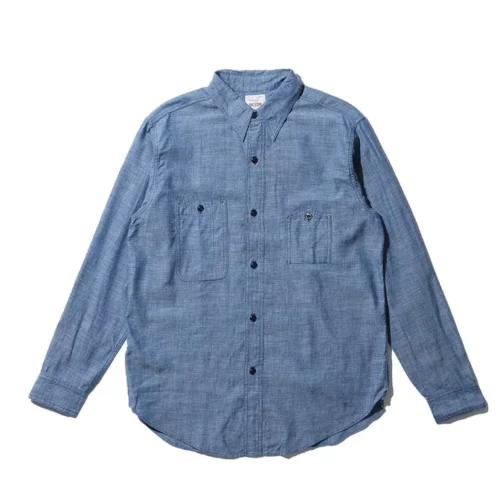
For those that want a crisper chambray in a slightly more muted colour, the 1942 Big Yank shirt (above) is a good choice and similar in most respects (including fit) to the 1935 shirt.
However, as it's a wartime garment, some of the construction details have been pared back, so, for example, you won’t find the triple-needle stitching here. The cigarette pocket (a new design called the mountain pocket) is also, presumably, simpler to manufacture given it doesn’t have a flap.
Honourable mentions
Bryan Shettig (above) founded The Rite Stuff with an aim of reproducing pre-WWII era workwear because, as he told UK stockist Those That Know, “as I continued to research [...], I found that in terms of workwear clothing the high point was the 1920s and 1930s. [...] The ‘40s and ‘50s were a period of maintaining, or slow decline, of the gains made in design and fabric quality leading up to the ‘20s and ‘30s”.
In writing this article, I spent a lot of time on Bryan’s website (and the associated blog) trawling through the considerable amount of research and archive material that he’s used to help him design his pieces. If anyone is interested in finding out more about the evolution of the American work shirt I’d highly recommend his two-part history.
Of The Rite Stuff’s chambray shirts, I really like the Uncle Sam in tan (above - it’s also available in blue) with its patented (naturally) E-Z Reach Double Cigarette pockets - they look really useful for those days when you want to travel light and keep your hands free. Uniquely, the shirt is finished with Corozo buttons, which were fairly common in the 1920s before being supplanted by Bakelite and plastic alternatives.
The Heracles work shirt (above) is another faithful reproduction of a 1920s/30s classic.
Whilst the number of heavy-duty design elements - the double-lined elbows and yoke, the ventilation holes, the extended chinstrap - might make the shirt less versatile for PS readers (who I suspect are just as likely to pair their chambrays with tailored flannel trousers as jeans) it’s an undeniably fascinating and expert construction.
Unfortunately, I wasn’t able to try any of The Rite Stuff’s shirts for this article, so I’d love to hear from readers that have experience of any of their products.
Manish is @the_daily_mirror on Instagram
Readers can find more information on chambray in the PS archives: The Guide to Denim and Chambray Shirtings
Next week: In part 2, our favourite modern, adapted chambray work shirts


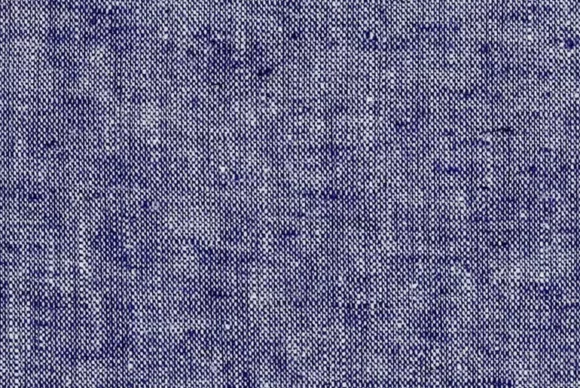
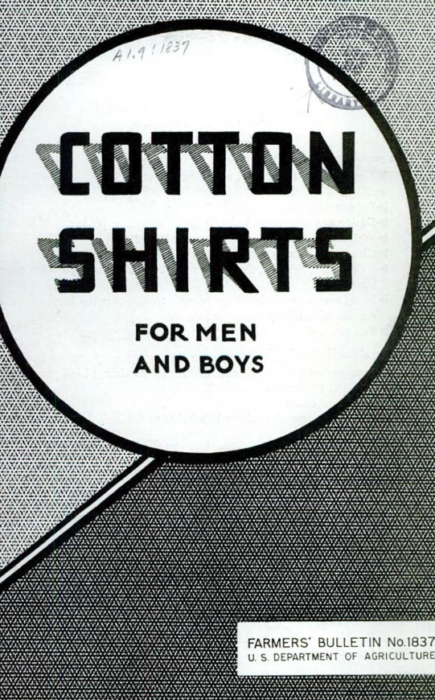
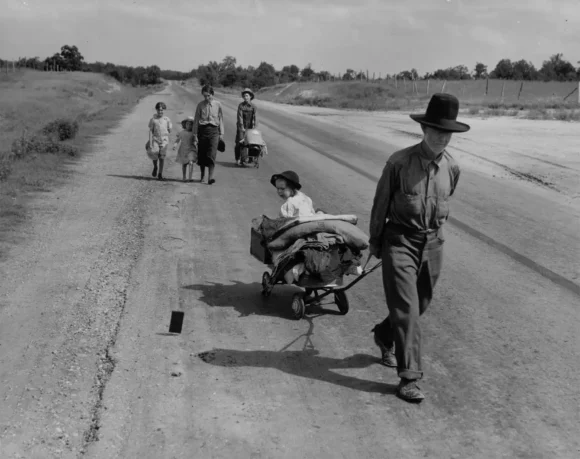
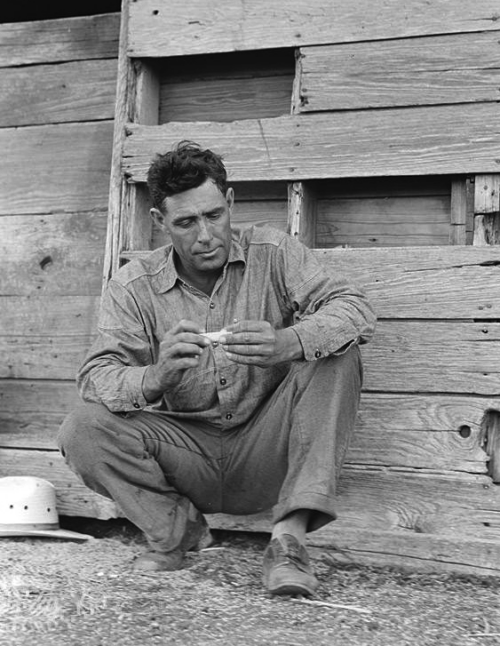
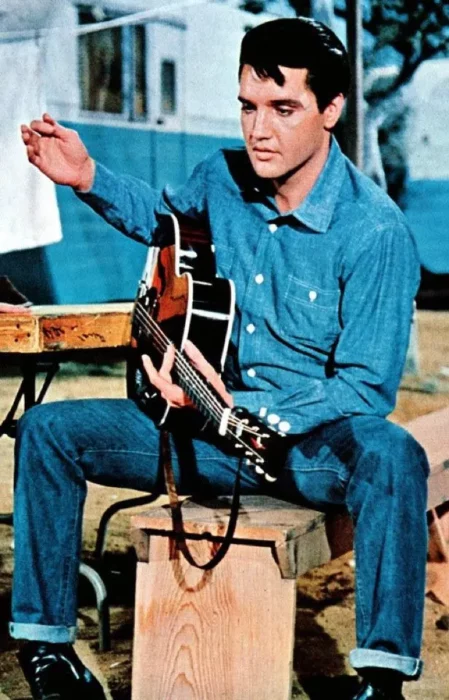
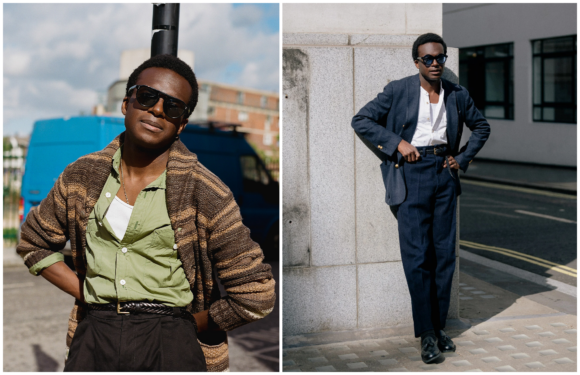
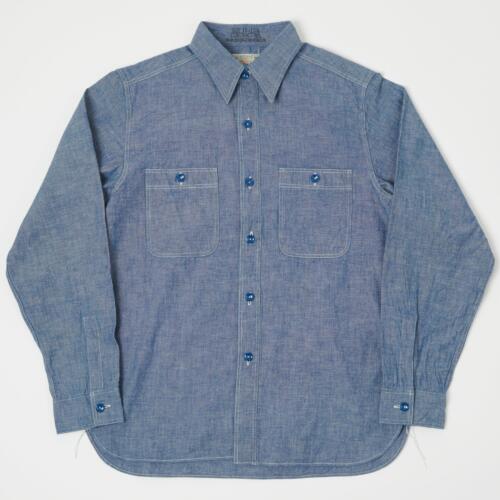
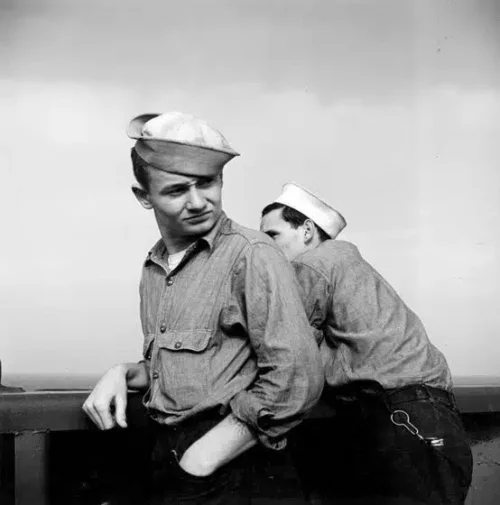
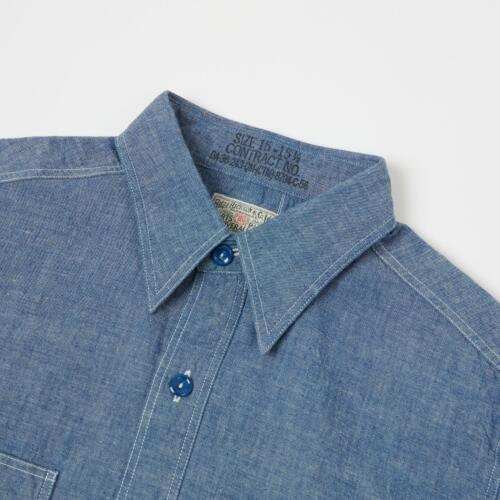
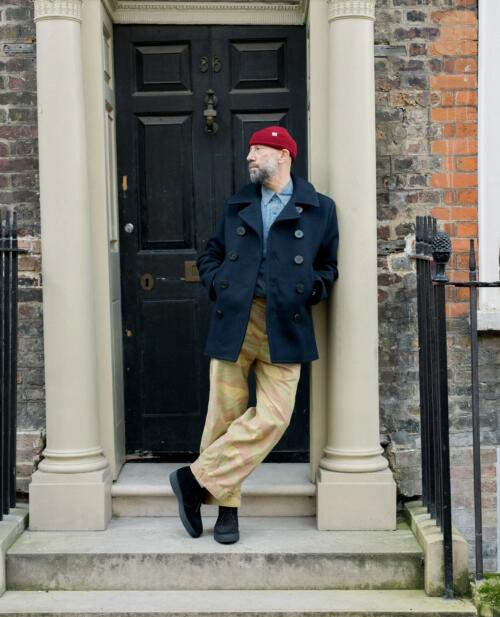
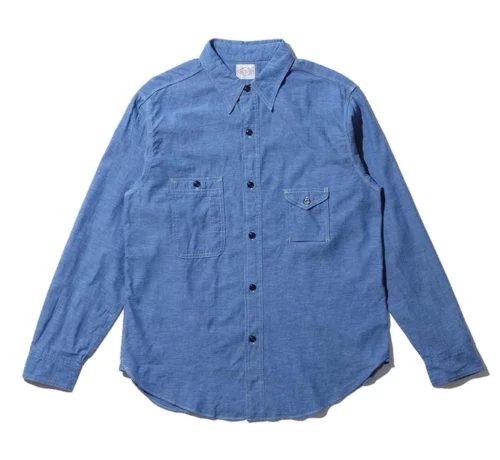
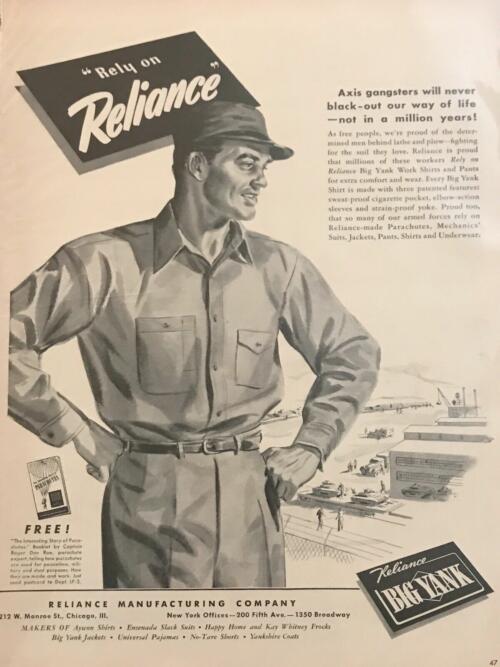
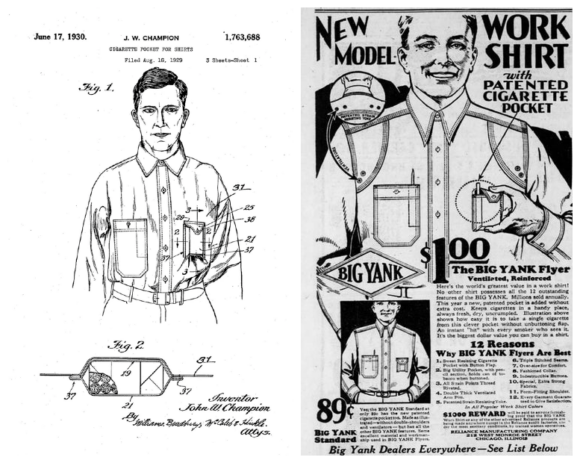
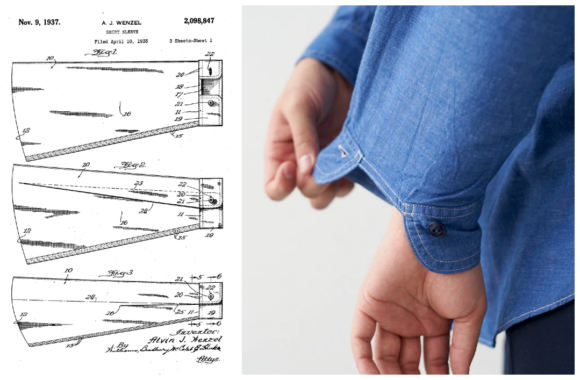
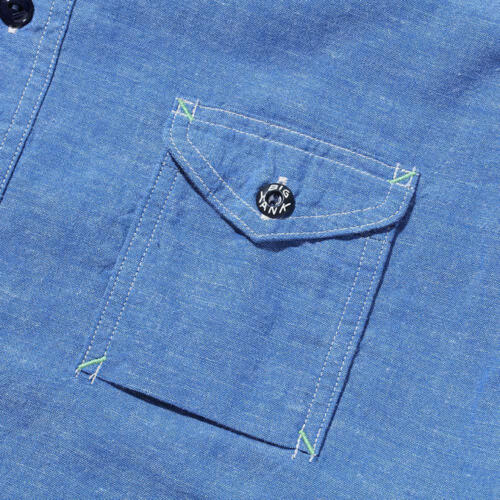
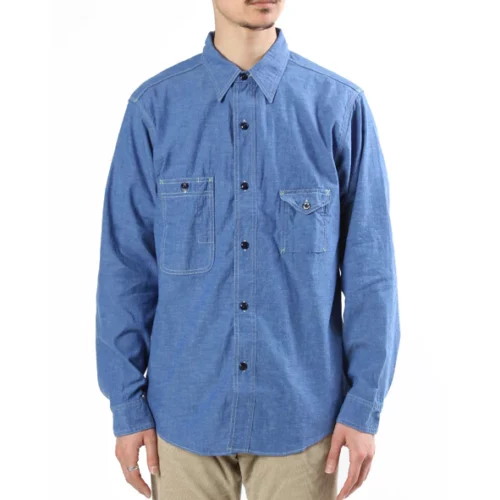
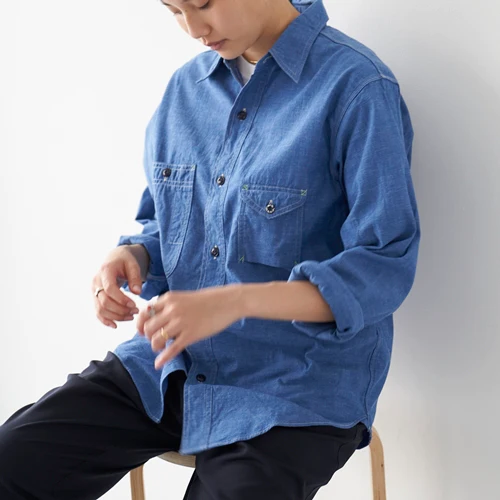
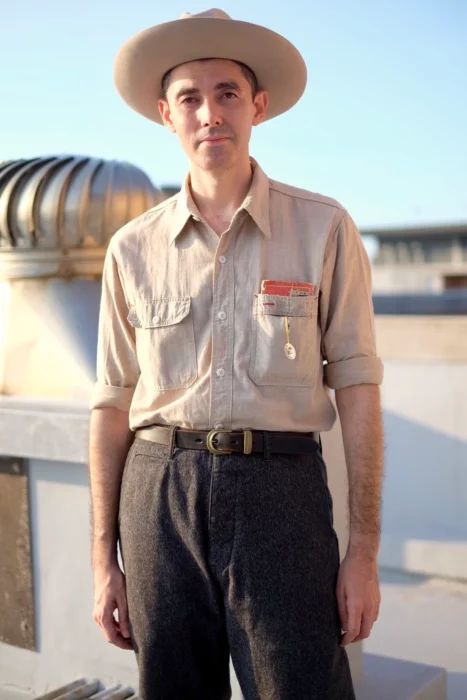
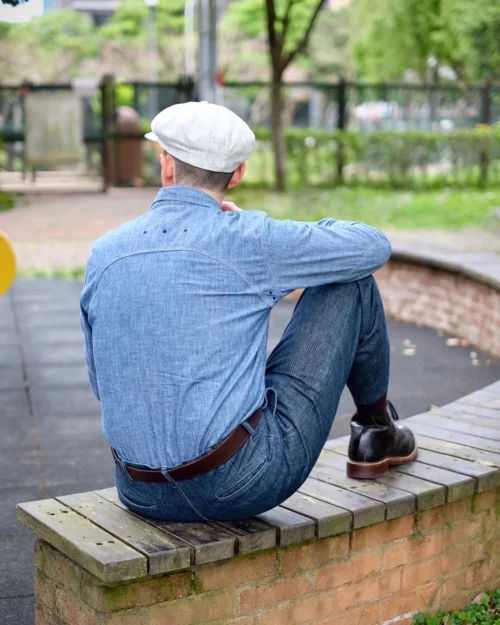

























Research photos
Buzz Rickson – 15-15.5”
So helpful! Thank you! I’m in NZ and have been so unsure on what size to get. I’ve bought stuff based on your sizing before though, so now know what to do 🙂
I’m really pleased they’re helpful Aaron L!
The Big Yank 1935 – 15.5”
The Big Yank 1942 – 15”
Hi Manish,
Another interesting article. I think some of the appeal, dare I say ‘magic’ of chambray work shirts comes from their origins. They were worn for a purpose and not for appearance. Whether this was construction, military or by people living in a time when it may have been their only shirt. The latter as in many pictures from the Great Depression and the Dust Bowl era. I find it curious that sometimes the makers of very expensive items draw inspiration and marketing ideas from this era. Perhaps there is a physiological reason at play.
As for brands I have had always liked work shirts and especially chambray and a couple purchased from Gap many years back, a second hand one by Gap and two from Uniqlo two years ago, have served me well. Although not at a PS price point they seem to have an authenticity associated with actual work and they won’t be ending up in landfill.
For sizing, I tend to err on the side of larger as especially with chambray they tend to develop a lovely drape as the material softens further from work and washing.
For styling they sit nicely under investment purchase outerwear from, for example, Drakes, The Real McCoy’s, Belstaff. and Coherence. For me a lot the be gained from mixing up high street with higher end.
Sorry for the long comment!
All the best
Thanks very much, Stephen. That’s really helpful!
Hi Manish, Me again! Slight tangent here!
Something I once touched was on with Simon was ‘affordable fashion not fast fashion’. The latter I have to say is ‘looked down upon’. I hold an alternative but not necessarily diametrically opposed view, that it’s putting stylish clothing within the budget of those not playing in the higher end space.
And a sweater made in China is not materially different in principle from bespoke tailors off-shoring to India.
I thought it’s something you may find interesting to write about. Simon suggested picking this up with you at some point. Say ‘Considered purchase of affordable style’.
Similar to when ( for example) you have included Uniqlo in some of the item comparison articles.
Happy to discuss further.
Thanks very much, Stephen.
I understand what you’re saying and think it could form a very interesting article. Let me take it away and chat with Simon more 🙂
This is an interesting point. I think Uniqlo is the exception rather than the rule on high street though. And even there, outside of a few of their perennial items (OCDBs, chambrays, some cotton T-shirts and socks etc) serious quality issues can start cropping up pretty quickly. There’s definitely a line to walk when it comes to democratizing fashion, but much of what’s sold on high street really is landfill quality.
I think the point is not where the item is made, but what it’s made out of. China has craftspeople capable of achieving things we never see in the west (skill at embroidery there is insane). But if the item in question is made out of a paper thin elastane-poly-cotton then it’s never going to look decent after a few washes. In that context – is the clothing still stylish? Or is it a way of tricking people into a seasonal spend and replace cycle?
Do you like black or charcoal chambray shirts or do you think that blue is better choice when it comes to chambray?
Also can these black chambray shirt be well worn with mid blue denim jeans similar to a blue chambray and dark wash jeans?
I prefer the blue as I think it’s more flattering and versatile.
However, the salt and pepper chambray is a classic in its own right too. I don’t see any reason why it couldn’t be worn with mid-blue jeans but I think you’d have to get the tones right. If the salt and pepper chambray is very salty (so quite light) then it might look a bit weak next to washed denim.
May I ask a question in return please, Ayush? Based on some of your recent questions, you seem to prefer darker shirts, but are unsure what trousers to pair them with. Is there any reason in particular that you’re focussing on darker shirts? My general advice is if you’re unsure how to pair something then it might be best not to force it.
Happy to chat more if you have any further questions 🙂
The city’s weather wherein I live could be termed as tropical and therefore a jacket is not required more than 8 months in a year. While going out during the evening I was thinking that darker shirts would fare better in comparisons to lighter shirts as the night time suits darker jacket and therefore lighter shirts if I am not wearing a dark jacket during evening would not look so nice and therefore the preference for darker shirts. Could you advice on it?
Ok, I understand.
Whilst I do agree that darker colours can often be easier to wear in the evening, I wouldn’t get too hung up on the idea of having to wear dark shirts in the evening if you’re not happy with what to pair them with.
As an example of wearing light shirts in the evening, think of classic evening wear: it looks great because of that contrast between a light shirt and dark trousers.
For the shirt you’ve attached above, if you’re thinking of wearing it in the evening, I might be tempted to try it with darker trousers – charcoal or even black.
Hope that helps!
The Guides Series just get better and better! Now Chambray Shirts.
These guides are so useful.
Keep them coming…..looking forward to the next one!
Thanks so much, Lindsay!
Another question?
I am a big guy ,181/4 collar ,measured at Budd in London, no less, and to that end, can you recommend a good basic source for a larger shirt with my collar size or indeed a shirtmaker .Luca Avitibile in Italy springs to mind. Also a supply of the chambray cloth itself, which I’m sure a good shirtmaker stocks anyway?
Hi Lindsay
Yes, Luca would be great and maybe Simone Abbarchi as well.
100 Hands also have some excellent chambray – we collaborated with them for the PS Selvedge shirt. However, they’re a little more expensive than the Italian makers.
Also, The Anthology (who I’ll cover next week) sell chambray shirts up to collar size 18″ which might work as a casual, collar-unbuttoned option.
Super Manish.
You’re a great help.
Emma Willis has a nice collection of chambray. I have a well worn twill chambray.
They are not work shirts,but mine has softened and is really comfortable. Sadly,prices have significantly risen but the quality is really top rate.
Something I’ve wondered about for a while now with chambray shirts, highlighted for me again with the penultimate picture: is there any particular reason one pocket will be open-topped but button closed still and the other will have a flap? Is it just an aesthetic thing?
Hi Aaron
I think it’s more of a functional thing. One pocket open for things you need to access quickly and/or regularly and one pocket with a flap to stop occasional items from falling out.
The buzz rickson’s is great. Size Large works well on me (178 cm, 77 kg, 100 cm chest). But I opted for the off-white version, which I find a lot more useful. My problem with msot chambray- (and most denim-) shirts is, that the blue colour is too deep/strong. Not like in the Cary Grant picture.
Thanks very much for your take, Alexander.
Yes, the off-white is really nice as well.
On the strength of colour, I chatted to Simon about this as well as he was of a similar mind. I think (and hope) something like the Buzz Rickson or Bryceland’s shirt (which is covered next week) would get there over time and after many washes. I agree, it’s a really gorgeous pale blue.
Hard to tell this to a renowned model of Bryceland’s like yourself, but this is also currently a bit of a problem with the Bryceland´s denim sawtooth westerner for me, which I own for about a year and washed/worn often. It is basically still dark blue. It looks of course stunning under a grey suit, and I am open for the occasional strong double denim look. But apart from that it is tricky to incorporate it (because of its colour and also a bit because of its substantial weight).
I understand where you’re coming from.
I know that some of the Bryceland’s team aren’t dainty when it comes to laundering their clothes – hot wash, tumble dry, etc. The construction of their clothes is good enough that the garment can usually take it. I wash my denim sawtooth on 30 degrees and it’s softened and faded a bit, but nowhere near as much as others I’ve seen.
Come to think of it, that’s probably another reason why the Cary shirt is the shade it is. I suspect it was just washed hotter and with more vigour because the shirts were designed for that. I’m over here putting things on a delicate wash to try and protect them!
I don’t dare to wash mine hotter than 40 degrees because of the MOP buttons. Thanks a lot for your detailed responses. Really appreciated!
Haha! No worries at all.
I should add that you might need to size up if you do what to wash the clothes hard.
For example, Kenji of Bryceland’s and I are a similar chest (Medium) but his chambray shirt is a Large and it has been washed hot – so it almost fits like a Medium but has softened up really nicely.
Enthusiastic owner of a black twill bryceland’s westerner here – can confirm that repeated 30 degree washes for a couple of years achieves lovely fading eventually!
Thanks very much, Charlie!
To fade denim fast use something like napisan (designed for white wash – but not a bleach). You won’t get big contrasts, but it will evenly fade the blue.
Don’t mix it with your white wash though. And don’t soak it (you may get an uneven fade).
I hear the orslow ones are designed to fade fast.
Very interesting and helpful.
I have (besides the PS/100 Hands chambray shirt) a workwear shirt from RRL. I like the shirt’s design, as so often good with RRL, but the cheap-looking buttons bothered me until now. Thanks to your article, I now know that urea buttons are the original, and my workshirt has similar looking polyester buttons, I assume.
Really pleased that it was helpful, Markus!
I like to know what I’m spending my money on and a lot of brands aren’t great at explaining the details – to be fair, maybe most of their customers don’t care.
In the case of the buttons, I too thought they looked a bit cheap at first but researching them has helped me appreciate them so much more.
Strange. I was thinking of chambray shirts last night to replace a couple of shirts quietly approaching their end-of-life.
I recommend Iron Heart organic chambray. It does have a little branding tag on the left pocket, but as IH is the only workwear/denim brand that makes sleeves long enough for my freakish arms, I won’t complain too much! Other than that, it’s 10 oz, stiff as all hell, and should last forever – as should be expected from IH. Maybe not exactly to the tastes of most readers, but if you’re used to breaking in raw denim, breaking in a shirt like that can bring similar joy.
Thanks very much for the recommendation, Robert.
To put that into context for other readers, that’s twice as heavy as most of the shirts in part one and two of the guide which are around 5oz.
The IH shirts appear to be specially dyed so no colour loss is expected. Has that been your experience too?
IH have also offered a 5oz chambray but this is currently sold out. I assume they may bring back in the summer.
Robert, can I ask what IH’s body lengths are like? As a 6’5″ and broad-shouldered workwear aficionado, it’s a source of constant regret that the loving Japanese repro brands are not built for my frame…
I too am a huge fan of Iron Heart. I’m also 6’5” with long arms and they are the only brand that provide sleeves that are long enough. In terms of sizing, all measurements (shoulder/chest/opening/sleeve) are clearly detailed on their website, and their support team offer brilliant advice. By a country mile, they offer the best customer service that I have experienced from an online supplier. Their shirts are also available from Rivet and Hide.
Thanks very much, Brian. This is very helpful.
Is this the shirt? https://www.ironheart.co.uk/tops/ihsh-21-blu.html#/576-colour-blue/830-size-m
I only ask because the sleeve length listed for a medium is actually shorter than, for example, the Big Yank shirt or the Bryceland’s chambray (which is discussed next week). That said I tend to take measurements on websites with a big pinch of salt!
Hi Manish
i agree the work shirt sleeves tend to be a tad shorter than their western cuts. Every time they get a new batch, the sizing can differ slightly, so these may be shorter/longer than the last, but they do update the sizing charts for each restock.
From memory they measure 3 shirts for each size and then use the average, and they provide the most accurate online measurements that I have experienced.
Also, if you have a requirement for say an XL, you can ask the team to source the shirt with the longest sleeve or widest shoulder or whatever your specific requirement is for your body shape. I recently purchased a shirt where they literally measured every detail to 0.1” so that I could chose the shirt that best fitted my proportions/requirements.
They also have a very active forum where members send fit pics and give great advice from personal experience re sizing, shrinkage etc.
And no, I’m not paid to promote them 😁
Haha! That’s wonderful insider knowledge. Thanks for sharing, Brian 🙂
Thanks, Brian – I’d always assumed IH did Japanese sizing, so will definitely investigate further.
Hello Manish,
Great read! I love my chambray shirt, and once I got one, the amount of wear it receives is surprising!
Do you have another casual shirt idea? I’ve been wanting something in green, and found Wythe’s green with white stripe oxford, but still not sure if its too polished? I want another option to wear with old jeans and boots. I have a 2 chambray shirts, and Wythe’s Western shirt. Wanted just a little more variety and not blue.
Thanks very much, Zak.
How about a brushed cotton/flannel shirt or even overshirt? A good way of working some pattern in as well and eschewing the standard blue.
I like the idea of an overshirt. Do you have recommendations? Would a safari shirt work as well? I’m not sure if that is even the correct name. The shirt I am thinking of is generally khaki, and may or may not have tabs on the shoulders.
Hi Zak
I think Simon’s article on overshirts should help.
A safari jacket could definitely work if the jeans and boots are a little smarter.
I can recommend Luca Avitabile, who also cooperates with Permanent Style. He has a very nice and versatile olive-green overshirt, which I wear quite often.
Timely article, as I’ve been looking a tchambray shirt options, Manish. Thanks. My problem is that I’m pretty slim but with freakishly long arms (37inch or longer if shrinkage or wrinklage is expected) which pretty much excludes any off-the-hangar options. I note another reader has recommended Iron Heart, which I’ll take a look at. Do you know of any other makers that offer a good chambray cloth but with either a tall/long option or customisable sleeves for customers that are part orangutan?
Hi Prad
There should be some options in the article due next week.
Thanks for another interesting article, Manish. I’ve been. fan of chambray shirts for decades, but I’ve struggled to find a satisfactory one. Probably the best I’ve come across is the Kenneth Field one available from Merchant Fox. The fabric weight is great and I like the colour too, but sizing is a bit odd, with the L a little too small for me and the XL being too large. In general, I struggle with RTW shirts because I have sightly shorter arms and find most RTW shirts too long in the sleeves. As a result, all of my shirts are now MtM. I have enquired from my shirtmaker if he’ll do a work-shirt style, but that doesn’t seem to be something he offers. Do you (or do any other readers) know of any shirtmaker who would make to measure a chambray workshirt?
Hi RT
There should be some options in the article due next week.
Thanks, Manish. I shall look forward to reading next week’s article.
Funnily enough, I’m wearing my Kenneth Field chambray as I write this – purchased from Merchant Fox a few years ago. TBH I have found the sizing to be true to size.
At the time I was desperate to try a denim sawtooth westerner but found the detailing a bit much for my style. The chambray was a great alternative.
Thanks, NL. I think that perceptions with regards to sizing are, to some degree, a function of the type of fit one wants too. I had exactly the same thoughts about the sawtooth westerner – I really wanted one, but having tried one on, it was just too much for me and felt a little costumeish. I have an old RL Western shirt in chambray, with more restrained styling and now very faded, of which I’m very fond.
It would be great to hear some options for those of us with lengthier arms. Japanese repro stuff is really cool, but the sleeves are always at least 2 inches short on me.
Chambray shirts are tricky. They’re neither crisp, white shirts nor dark, rich indigo denim. They can appear drab on many people, a safe compromise, a past era’s version of throwing on a “don’t look at me” fleece jacket or hoodie in 2024.
I wore things like this in high school in the eighties, formless, oversized button up shirts, hanging on my skinny frame like a scarecrow. Even a handsome, young Elvis here looks mediocre, and I blame it on the chambray shirt.
Have I been too grumpy?
Part of what you’re saying is about the fit you had. And maybe the quality? I’d agree that a pale blue shirt is a pretty neutral choice. In more formal contexts it’s about what you pair it with – Italian men often use a pale blue shirt and navy tie as the foundation that they build the more interesting parts of their outfit on top of. A chambray can fulfill the same role for a less formal outfit. A good one has a bit of texture to add visual interest, and pairs well with lots of things. If the fit is right it’s a good building block to work with 🙂
Hi manish: apologies if I missed this but I didn’t see any mention of the chambray shirts you described having a “button down” collar. Same question as regards the PS chambray shirt. Many thanks.
Hi Howie
Sorry, I can’t recall/find reference to a “button down” in the article. Can you let me know if I’ve missed something.
However, there is a button-down option in next week’s instalment.
Hi manish: The old cliche about two countries separated by a common language (I’m in the US). My question relates to the collar: Do the chambrays usually have the type of collar that one might stick a plastic tab in, or button down? Which does the PS version have (or neither)? I’ll keep an eye out for next week’s installment. Many thanks.
Hi Howie
No worries at all.
So, the shirts in this guide won’t have collar stays (the plastic tabs). They’re essentially work shirts so a soft collar is absolutely fine.
The PS Chambray is a button-down shirt. Again, it won’t have collar stays as that would interfere with the way the collar rolls when it’s buttoned.
Hope that helps!
Always enjoy your pieces for PS, Manish! I was just considering picking up a casual chambray shirt with pockets, so this is particularly well-timed for me. The two I had been considering was the Kenneth Field (sadly, no longer available on the Merchant Fox) and one from Rubato (also no longer available). I had been thinking these could go well with ecru denim or ivory chinos during the day. The evening is trickier – maybe black denim. Nice to read the history and see all these recommendations.
Hi Tom
Thank you so much!
I think you’ll enjoy next week’s instalment with similar shirts including an update on the Kenneth Field shirt!
Cheers 🙂
I own the Rite Stuff Atlas. The quality, fit, and details make this shirt unbeatable. I like to turn my clothes inside out to see how they are truly constructed. This one exceeded it’s (really any) pricepoint shirt I have ever examined. I am a size medium in most clothes (ex, size 40 in Brown’s Beach vest, which of similar quality) and a medium in the Atlas.
Thank you so much! That’s great to hear.
I love this series, thanks for giving us some history of the chambray. I’d love to know more of the history, however. After describing the cloth’s origins in France, you then jump to it being the established workwear, while giving examples US-inspired pieces. Are we to understand that its adoption is quite wholesale across the Western world, or is the chambray shirt distinctly American as many of these brands are using as inspiration for their contemporary pieces? Additional insight would be appreciated.
I also wanted to add that my (current model) Drakes chambray shirt is the perfect fit for finding one that is slimmer and appropriate for layering (like an Oxford) underneath my blazers, cardigans, and other top layers. The other looser fitting chambray shirts that I have, similar to what’s showcased here, I would only wear on its own or with a jacket/coat on top.
There may be room for one or two more, and I am finding that these variations are letting me expand the importance of the chambray shirt in my wardrobe–becoming my de facto shirt.
Hi Paul K
Great question and it’s something I can definitely look into.
The precedent (Cambric) was seen as a luxurious cloth in the Middle Ages and the Renaissance because it was not as rough as work clothes and more durable than super luxurious cloths like silk.
I’m not sure exactly how or when that became the chambray we know today. I’m sure it was widely used across the world, but its use in America is quite prominent because of the sheer volume of its use as well as the influence US workwear on men’s casual clothing.
Thanks for your thoughts on the Drake’s chambray shirt too – is this the popover?
Dear Simon, Back when I was at university in the early 1970’s, the dress was: the blue work shirt, white canvas painter’s pants, and Sperry TopSiders (no imitation deck shoes). The long gone department store, J C Penney, had the best quality Chambray shirts, and with white buttons. Ralph, with RRL in the early 1990’s did the best job of recreating the Penney’s shirt.
Hi there,
I’m going to Tokyo and I’m curious where to find me some preloved Real McCoy’s, Buzz Rickson, Post Overalls etc etc?
Also I’ve noticed that Iron Heart is half price in Japan compared to Europe. Is this true for the above mentioned brands as well?
Hi Fenvig
Simon has written an extensive post on Japanese vintage shopping so hopefully you’ll find something in there that fits the bill.
Sadly I’ve not been to Japan but I think it’s a safe assumption that these Japanese brands will be cheaper in Japan.
Safe travels!
What are your thoughts on Thom Browne’s chambray shirt?
I’m afraid I haven’t tried them, Dan K.
However, I’m not mad on the four bar stripe and the price is in excess of £600 so I don’t think they’re for me.
Great article Manish. I’ve had my eye on the Anthology workman chambray in Vanilla as a more modern take. I see it as a business casual office friendly shirt (perhaps even with a blazer) but with enough character for the weekend in shorts but not as much as say the LEJ 1 pocket that would be great but more limiting. Agreed? Any experience with the Anthology chambray – weight, feel, or sizing? Best,
Thanks very much, Andrew!
That shirt is actually covered in part two next week so can I hold off answering this until then?
of course, appreciated.
Manish,
If commissioning a chambray shirt, would you opt for button down or spread collar?
About to place an order with my shirt maker and am curious about how you address this. I have always opted for BD for oxfords and spead for work shirts, so am not sure where this would fall.
Thank so much
Hi PM
For a first commission in chambray I would opt for a button down – just to keep it in the realms of casual (as Simon did with the PS selvedge chambray shirt).
And then if you’re really enjoying it and would like to wear chambray even more formally maybe a spread collar can come later 😊
Loved reading this – such a classic deserves its own piece.
Would be curious to have seen a look at the RRL versions too. Partly because they always look great but also partly selfishly because I can never fully work out RRL sizing and fit..
If shopping for vintage chambray shirts, my favorite since the late 60’s has been “Big Mac” 100% cotton from JC Penny. Perfect shade of blue and white buttons. But, read the label before buying because they changed to a 50 poly/50 cotton blend in the mid 70’s which I recommend avoiding.
They are lovely Gus – I have one of those
Would you classify Big Yank as a chambray work shirt as appearing from the photos it seems that there is not white stitching in it?
Yes – there is variation among work shirts and has been over time. Plus a modern one will often update one thing or another and still have the same essence
The company’s website mentions it as indigo chambray workwear shirt but do you think the the workwear effect is lost due to the absence of white stitching?
Ah. Yes that is certainly smarter – sorry, hadn’t seen the image. The colour of the indigo makes that difference as well though, as does the single pocket and so on
Simon! Would navy chambray shirt of Buzz Rickson USN chambray as shown in the picture look good with dark olive linen trousers?
Yes I would think so